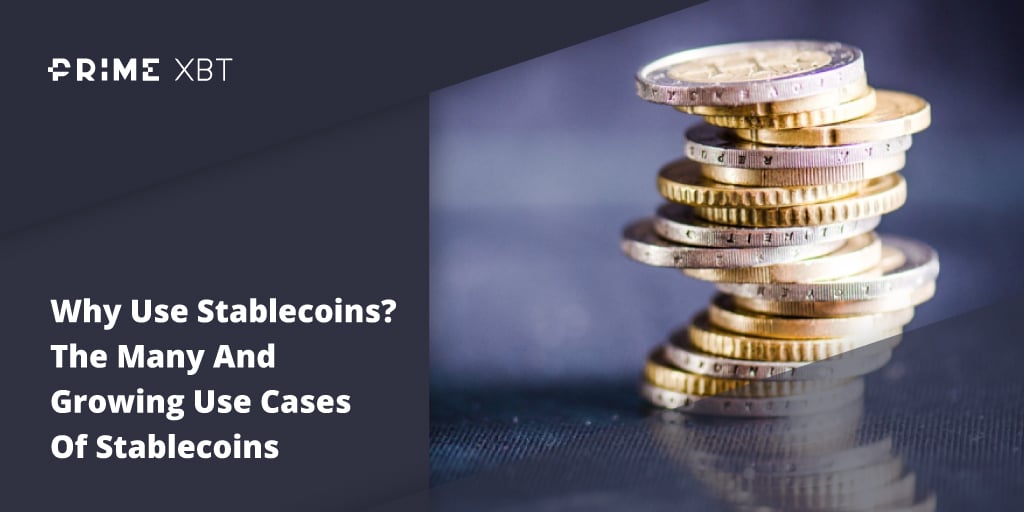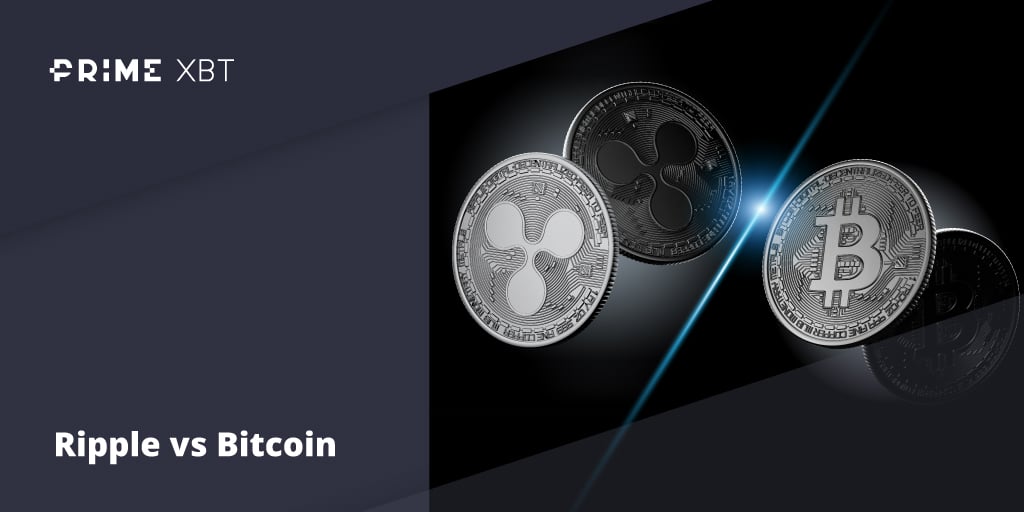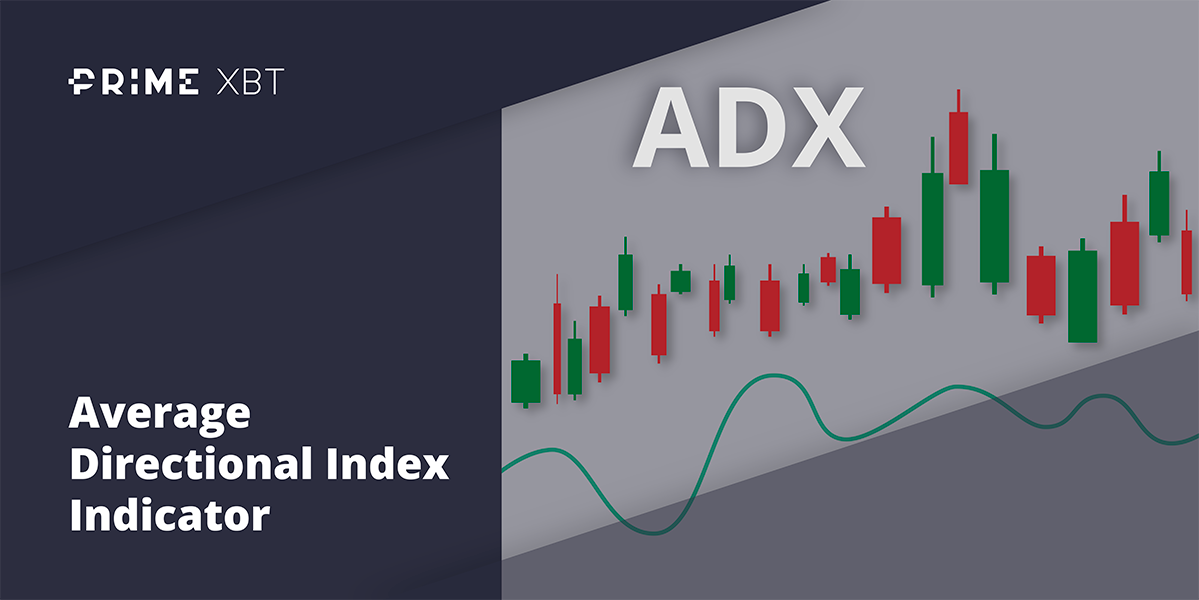US stocks rose on Friday after a better-than-expected retail sales number. Better earnings reported by Citigroup and Wells Fargo also managed to reverse the overwhelming bearishness that overshadowed the markets for much of the week as investors feared for the worst in the upcoming inflation number release.
A “leak” being circulated on Tuesday revealed that the CPI rose 10.2% year-on-year in June, causing the markets to crumble in fear. Even though that report was eventually dismissed as fake, it had already caused panic, sending the yield curve inverting to its most extreme levels since 2007.
The real data released on Wednesday was not far behind, as the CPI number eventually came in at 9.1%, shocking economists who had anticipated only an 8.8% increase. Core CPI also rose more than expected at 5.9%, compared with the 5.7% estimate. Food, energy, and rent were the main contributors to the higher number.
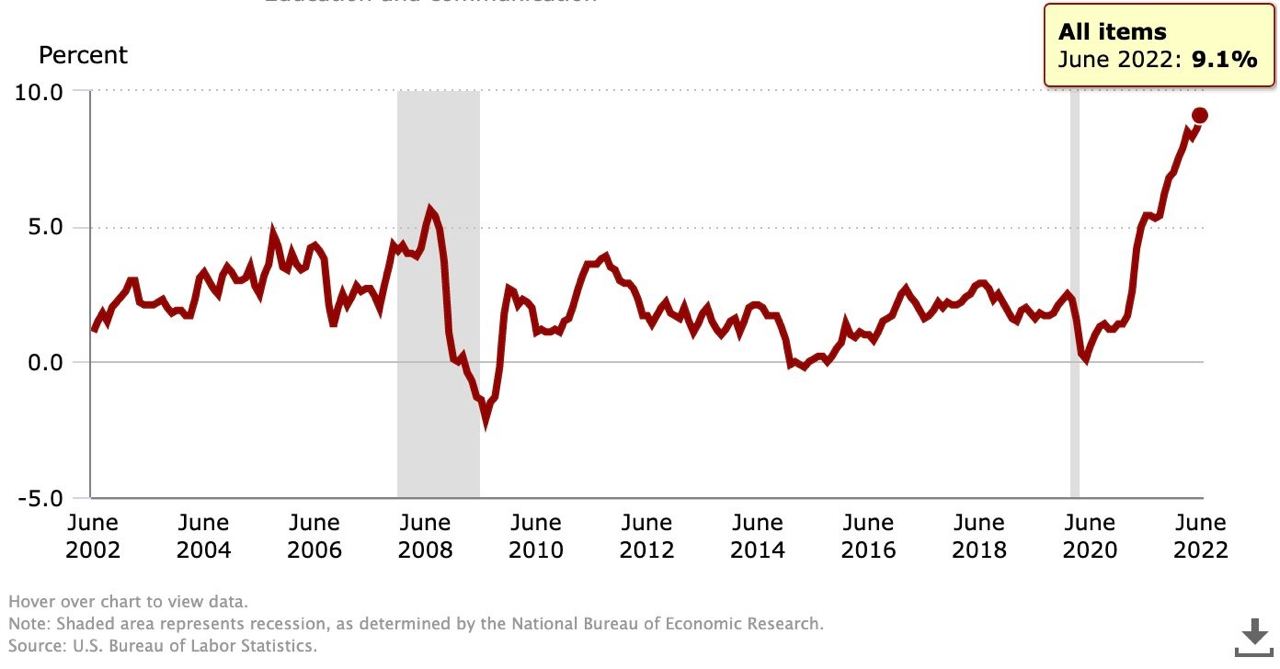
With inflation still roaring fiercely, Fed officials are now open to a 100-bps hike in July, although the few interviewed last week were still more keen on a 75-bps hike. Market participants, however, are now pricing in an 80% chance of a 100-bps hike at the upcoming July 26-27 meeting after the Bank of Canada shocked markets with a 100-bps hike at its policy rate meeting on Wednesday, citing the need to “front-load” rate hikes to guard against high inflation from getting entrenched.
With rates expected to rise sharply in the US as well, and with recession remaining a strong headwind, the yield curve spread continued to widen, with the 2-year/10-year spread falling to -0.26 before finishing the week at around -0.2. This signal is often interpreted as a dead giveaway of an impending recession.
The US 10-year Treasury yield spiked higher on Wednesday to 3.04% after the CPI data and pushed the USD higher, sending the DXY to a high of 109 before retracing back down to 107.4 as traders trying to balance the conflict between higher interest rate and recession take profit.
US stocks eventually still ended negative for the week even after Friday’s strong rebound, with the Dow falling 0.2% while the S&P finished 0.9% lower. The Nasdaq was the worst performer, dropping 1.6%.
Over in Europe, the situation is turning even more dire as the Euro has sunk even lower, with the EUR/USD breaking parity after data out of Europe continues to disappoint even as political drama hits Italy just one week after it hit the UK. Italy’s Prime Minister Mario Draghi has resigned after the country’s coalition government withdrew its support of him a parliamentary confidence vote. However, his resignation had been rejected by the Italian President and the drama continues to unfold, even as Europe faces the worsening energy crisis head on. Confidence in the EU is dipping, even in Germany, the stronghold of Europe.
The German Economic Sentiment data released on Tuesday saw the measure plunge to levels not seen since the European sovereign debt crisis in 2011, which was the initial trigger that sparked off the free fall of the EUR/USD last week where it even broke parity, falling to a low of $0.995 before the USD retracement currently underway helps salvage the EUR/USD back to $1.01. The ECB monetary policy meeting coming up this Thursday could provide some interesting two-way volatility as the central bank is widely expected to raise rates for the first time in over 10 years. Most analysts are expecting a 25-bps rate hike.
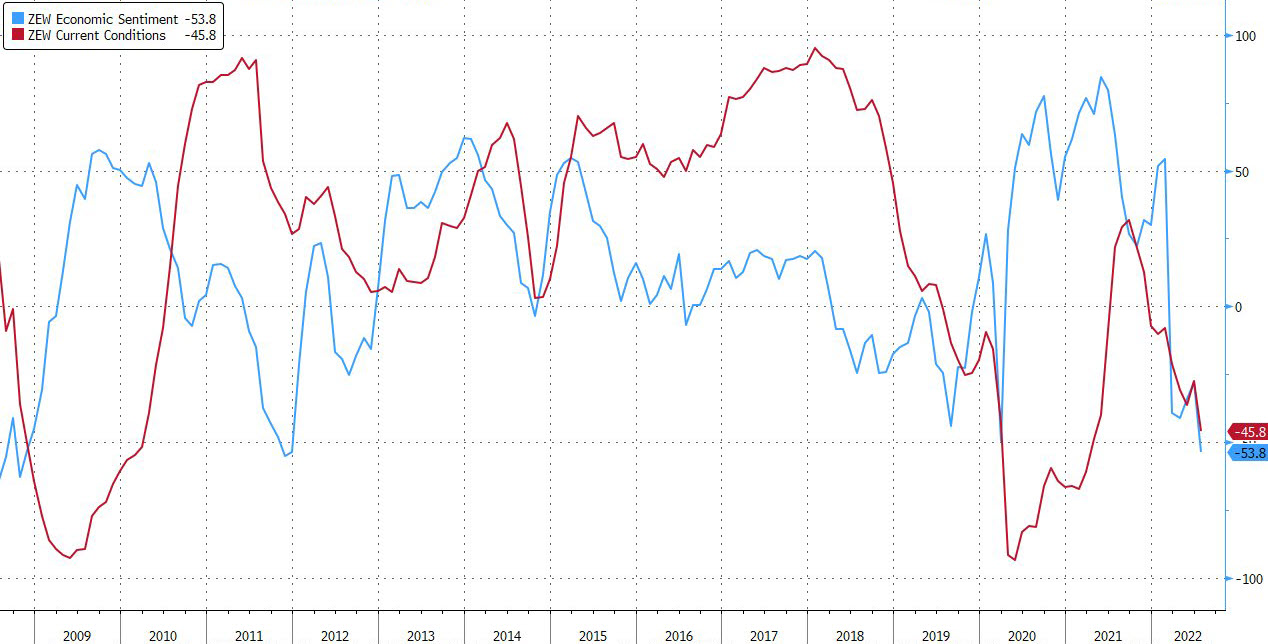
Precious metals did not have a good week either. Gold fell 2.2% while Silver lost 3.5% as the USD advanced. Both precious metals are up around 0.3% as the new week opens with the USD doing a retracement.
Oil had a roller coaster week as demand worries due to recession saw oil prices plummet below $100 per barrel right at the start of the week. News that US President Biden was visiting Saudi Arabia further prompted traders to sell and stay out of the trade just in case the visit managed to salvage ties between the two nations. However, as Biden’s trip ended with no output increase from the Middle East, oil prices bounced higher on Friday. Despite Friday’s 2% gain however, oil prices are still trading under $100 a barrel, with both Brent and WTI Crude closing the week still lower by around 7% at $98.60 and $94.70 respectively.
Oil started the new week initially retreating by about 0.7% before Iran announced that it would raise the selling price of its Iranian Light Sweet Crude by $2.80 to $8.90 above the Oman/Dubai average for August. The news reversed oil’s losses, with Brent now flirting with $100 per barrel again after gaining 0.6%, while WTI Crude is up 0.3%.
Analysts are long-term bullish on oil prices even as the black gold gets torn between supply tightness and an anticipated fall in demand as economies slow.
While the recent USD strength has been a bane to other fiat currencies as well as precious metals, its impact on crypto is not as clearly established. BTC’s correlation with the USD has been on a long-term declining trend, even though there were spurts of rising correlation on shorter time frame periods. Last week, even when the DXY rose to its highest level in 20 years, BTC rose instead of falling. This is good news for crypto investors as the USD is expected to continue rising at least until Q4 this year as the Fed has clearly telegraphed that it will raise rates in July and September.
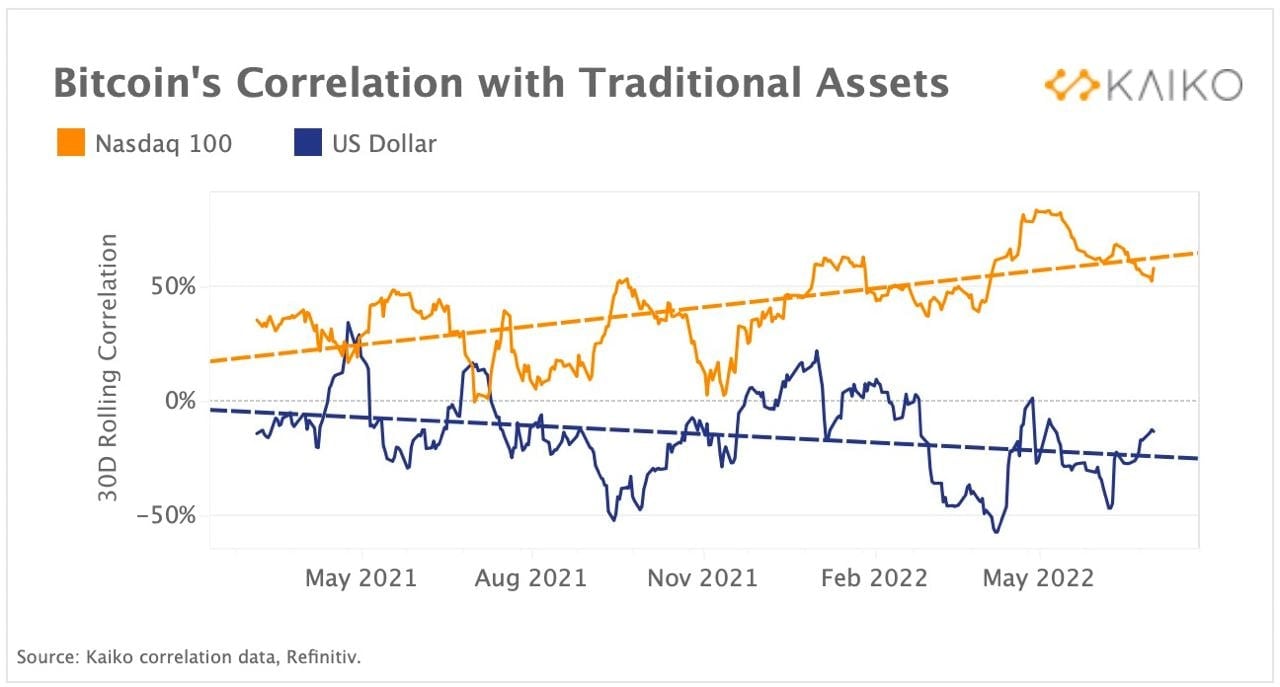
Even more significant was the way crypto prices managed to crawl higher even when the CPI report caused stock and gold prices to fall. This could be one of the first signs that the crypto market may finally break away from its strange correlation with equities since the COVID crash in 2020. Historically, the crypto market trading on its own fundamentals have offered investors the best returns long-term.
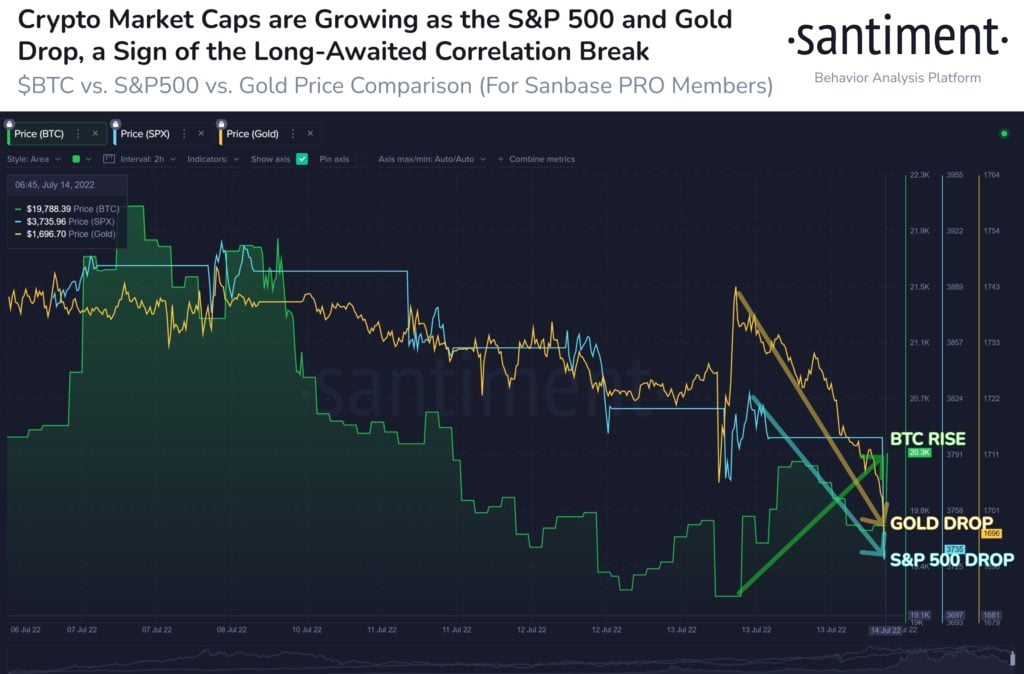
Crypto Headline News Last Week
Embattled crypto lender Celsius surprisingly files for Chapter 11 bankruptcy protection in the USA after repaying its DeFi debts, with the CEO quoted as saying that this is the right decision for their community and company. The firm said it would look to stabilize its business by restructuring in a way that maximizes value for all stakeholders and has $167 million in cash on hand to support operations in the meantime.
The news brought pessimism to some traders who took the opportunity to open short positions, only to get liquidated when the crypto market bounced higher on Friday, even though the liquidation amount is not significant as trading volumes have dived after hitting record levels in June.
Meanwhile, Blockchain.com also announced that it had taken a $270 million hit on a loan to bankrupt crypto fund Three Arrows Capital.
Amid more urgent calls to regulate the sector, the G20 is putting in the final touches and will be presenting their global crypto rules in October 2022.
Following SEC Chairman Gensler’s comment that only BTC can meet the definition of being a commodity, MicroStrategy’s Michael Saylor is now claiming that ETH is a security. The well-known Bitcoin maximalist opined over an online interview that a cryptocurrency can only be a commodity if there is no issuer, and that no one could make decisions on the network.
According to Saylor, the fact that ETH was first issued via an initial coin offering proves it is not a commodity and went further to elaborate that there is a management team, a pre-mine and continual hard forks on the ETH network that makes it hard to be classified as a commodity. That said, the man believes that most other crypto besides BTC are securities.
Many in the crypto community, however, do not agree with Saylor on this view, citing that even BTC has had upgrades like SegWit and Lightning. Ultimately, whether a crypto will be classified as a security would need a tedious discovery process by the courts that would take a long time to be decided, as can be seen by the Ripple lawsuit. Hence, most investors are still not basing their investment decisions on whether a crypto is a security but are basing their investment decisions on token fundamentals as well as technical charting.
For most of the crypto market in general, while the bottom could still be still some distance away, metrics are nonetheless showing that prices are currently far nearer to the bottom than they are to the top, and that the risk-vs-reward at current levels favour longs if one were to adopt a long-term view.
BTC Undervalued by Historical Standards
MVRV Z-score can be used to identify periods where BTC is over or undervalued compared to its ‘fair price’. Historically, periods where it has entered the green zone have correlated with cycle bottoms, implying that the leading crypto could be undervalued at current prices.
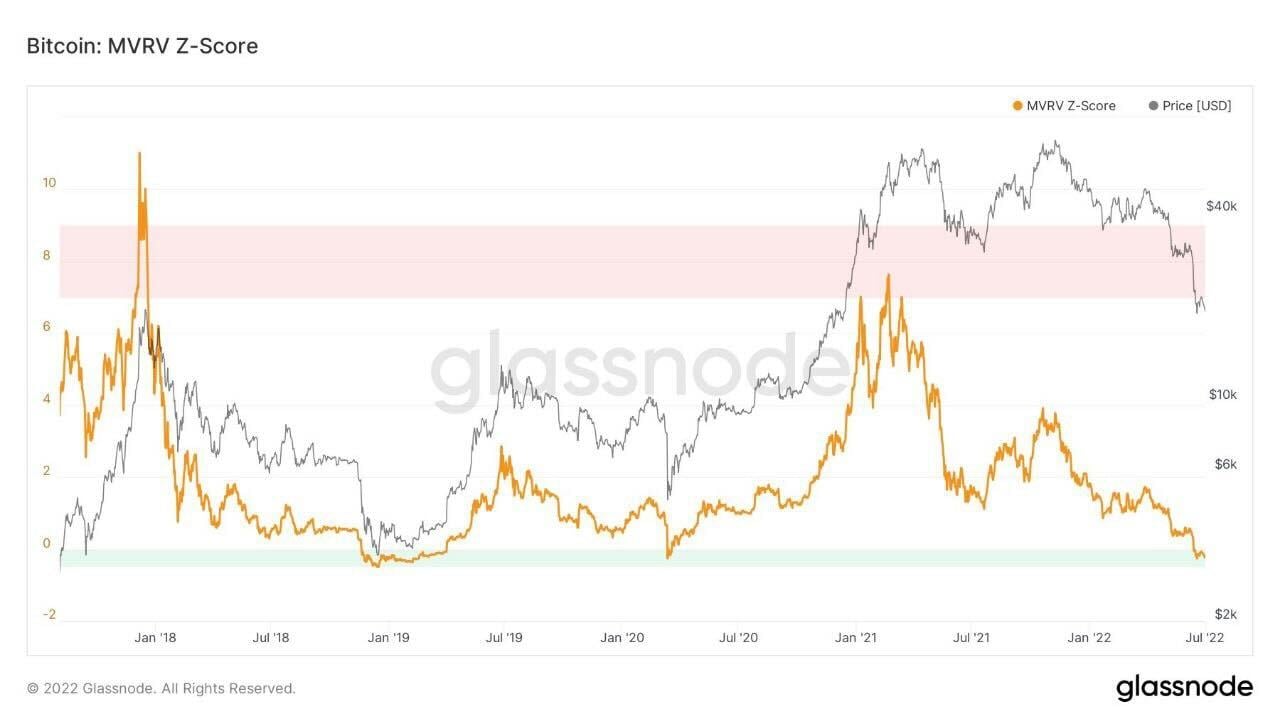
ETH Merge Has a Date, Short-Liquidation Surges
In a PoS Implementers’ Call on July 14, the developers of ETH agreed that the merge of PoW to PoS be tentatively scheduled for the week of Sept 19. However, the final date would still depend on the results of the merge of the testnet Goerli that is scheduled to happen on August 11. As the date for the Merge draws near in September, the price of ETH could experience heightened volatility. Traders may want to make a note on your trading diaries.
Ever since the news was released, the price of ETH had been rising for 3 consecutive days, even finally managing to jump 12.5% to break $1,400 on Saturday as the quick and sharp price increase liquidated some $98 million shorts within an hour before price retreated slightly.
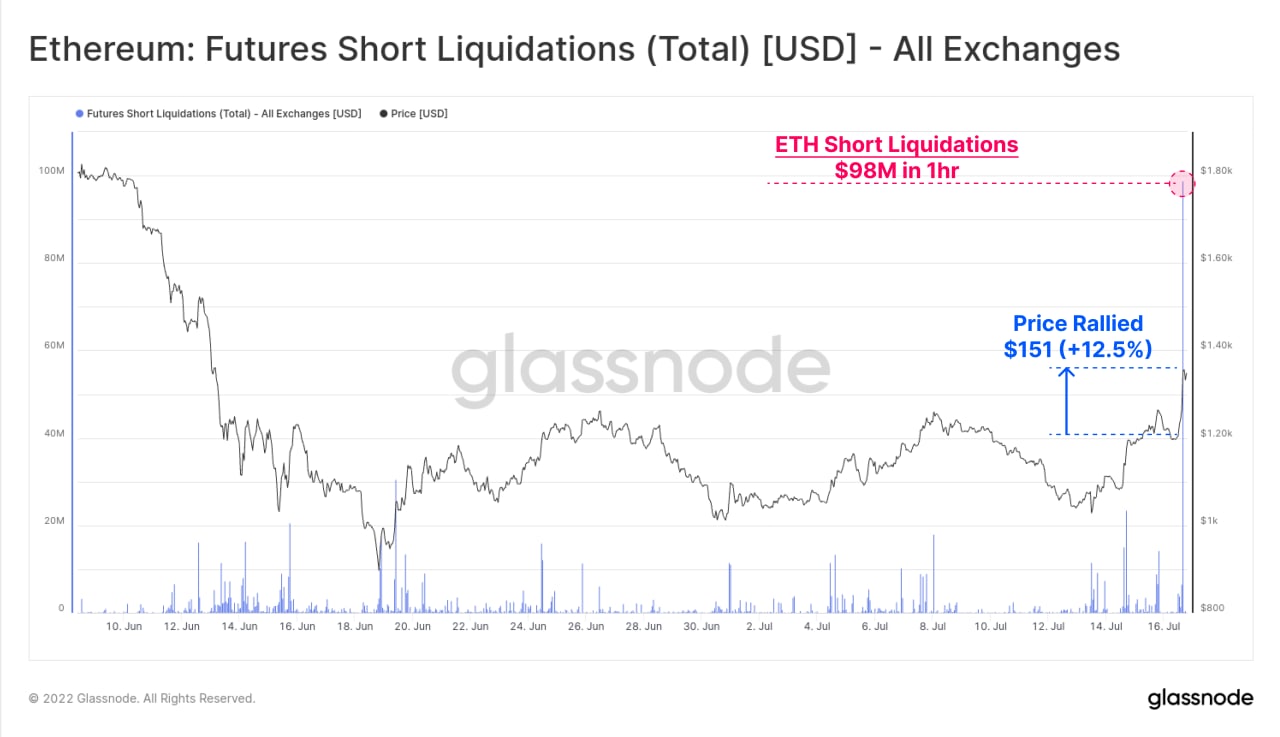
The jump has taken ETH out of its consolidation zone between $900 and $1,280 and some recovery in its price may occur should the new resistance-turned-support at around $1,280 holds.
For the month of July, ETH has recovered around 29%, making it one of the best performers of the month. This strength could be a result of new dip buyers as the number of new addresses with 1,000 to 100,000 ETH has increased by 131 since May.
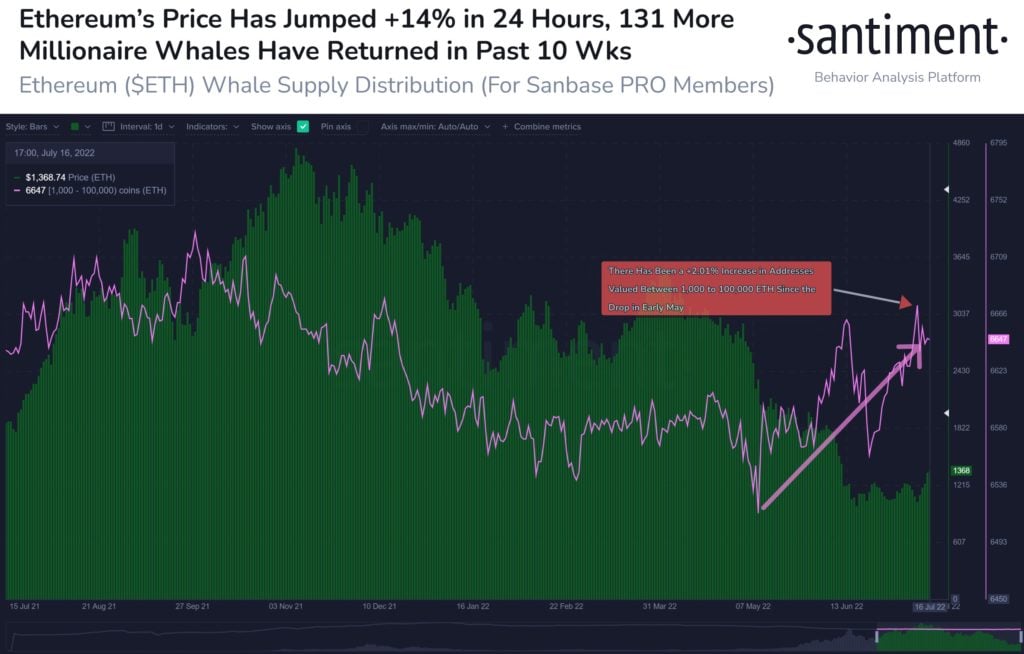
Pressure On XRP May Ease with 8-years of Selling Over
After selling consistently for over 8-years, former Ripple co-founder Jed McCaleb may be finally done with the offloading of all his 9 billion units of XRP. As Jed continued to sell millions of XRP daily, the consistently smaller remaining amount of XRP in his wallet has brought many cheers to the XRP community, who have been faithfully monitoring the wallet for the past 8 years. Jed was allowed to sell only a fixed percentage of the market volume in order not to crash the price of the token, which was why he took 8 years to offload all.
As at the morning of July 18, Jed only has a balance of 193 XRP left in his wallet, which will likely become zero by the end of the day.
While the direct impact of Jed having finished selling his XRP is not expected to drive up the price of XRP immediately, the fact that this overhang is finally lifted could send some new buyers in.
With the lawsuit continuing to run its course, any positive spin in favour of XRP could drive XRP’s price jump by an even bigger magnitude than before since Jed has no XRP to dump on buyers anymore.
Perhaps encouraged by the Jed news, investors poured into XRP on Friday as the network saw a rapid surge in trading volume. Around 18.7 billion XRP tokens changed hands in the final hour of trading on Friday. Traders may want to keep an eye on XRP in the coming days as such large volume surges in the past often led to a large increase in the price of XRP subsequently.
As a short squeeze gets underway, crypto prices are largely higher by over double digits, which is a welcome sign for traders after the stresses of the past two months. With correlation between crypto, stock prices, and the USD declining, the week ahead could be exciting for crypto even if the stock market becomes beholden to company earnings reporting this week.
